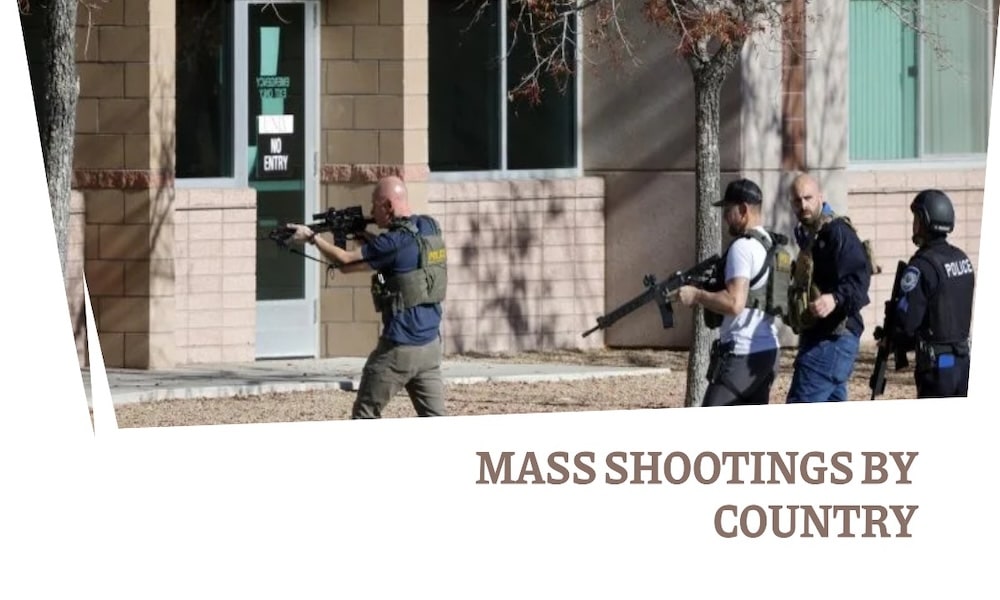Introduction
The United States has become synonymous with a disturbing trend: mass shootings. This article aims to provide an insightful exploration of mass shootings in the U.S., examining specific incidents and dissecting the underlying factors and potential solutions to this complex crisis.
The Harrowing Reality of U.S. Mass Shootings
Notable Incidents and Their Impact
- Sandy Hook Elementary School (2012): This tragedy, where 26 people, including 20 children, were killed in Newtown, Connecticut, shook the nation and sparked a nationwide debate on gun control.
- Pulse Nightclub Shooting (2016): A devastating attack in Orlando, Florida, where 49 people were killed in a hate crime against the LGBTQ community, drawing attention to issues of gun violence and hate crimes.
- Las Vegas Shooting (2017): The deadliest mass shooting in recent U.S. history occurred when a gunman killed 58 people at a music festival. This incident highlighted the devastating impact of high-capacity firearms.
- Parkland School Shooting (2018): The shooting at Marjory Stoneman Douglas High School in Florida, resulting in 17 deaths, ignited a youth-led movement advocating for stricter gun laws.
- El Paso Walmart Shooting (2019): A shooter targeting Latinos killed 22 people, raising concerns about racially motivated violence and the role of hate speech in fueling such incidents.
Statistical Overview
- Frequency and Trends: The U.S. has seen a worrying increase in the frequency and deadliness of mass shootings over the past two decades.
- International Comparison: The U.S. stands out for its high rate of mass shootings compared to other developed nations, underscoring the need for a deeper analysis of domestic factors.
Examining the Root Causes
Gun Legislation and Availability
The U.S. has less restrictive gun laws compared to many other developed countries. The ease of access to firearms, including high-capacity weapons, is a significant factor contributing to the high rate of mass shootings.
Cultural and Societal Aspects
America’s unique gun culture, which associates firearms with personal freedom and self-reliance, plays a role in the prevalence of gun ownership and, by extension, mass shootings.
Mental Health Considerations
While mental health issues are a concern, they are not the sole cause of mass shootings. The tendency to oversimplify the link between mental health and mass shootings can lead to stigmatization and overlook other critical factors.
Strategies for Prevention and Response
Legislative Reforms
Examining successful gun control measures in other countries, such as Australia’s buyback program, can provide a blueprint for effective legislation in the U.S.
Community and Law Enforcement Initiatives
Community engagement programs, improved law enforcement training, and threat assessment protocols can play a crucial role in identifying and mitigating potential threats.
Technological Innovations
The use of advanced technologies, including AI for predictive analysis and improved background check systems, can enhance efforts to prevent mass shootings.
Conclusion
Addressing mass shootings in the U.S. requires a multifaceted approach, combining legislative action, cultural shifts, community engagement, and technological advancements. By learning from past incidents and adopting a proactive stance, there is potential to significantly reduce the occurrence and impact of these tragic events.
FAQs
What are the most lethal mass shootings in U.S. history?
The Las Vegas shooting (2017) and the Orlando nightclub shooting (2016) are among the deadliest, highlighting the need for urgent action.
How does U.S. gun legislation compare with other countries?
The U.S. has more permissive gun laws compared to countries like the UK and Australia, which have stricter regulations and lower rates of gun violence.
Is mental health the primary cause of mass shootings?
While mental health can be a factor, it’s important to consider the broader context, including accessibility to firearms and societal attitudes towards violence.

